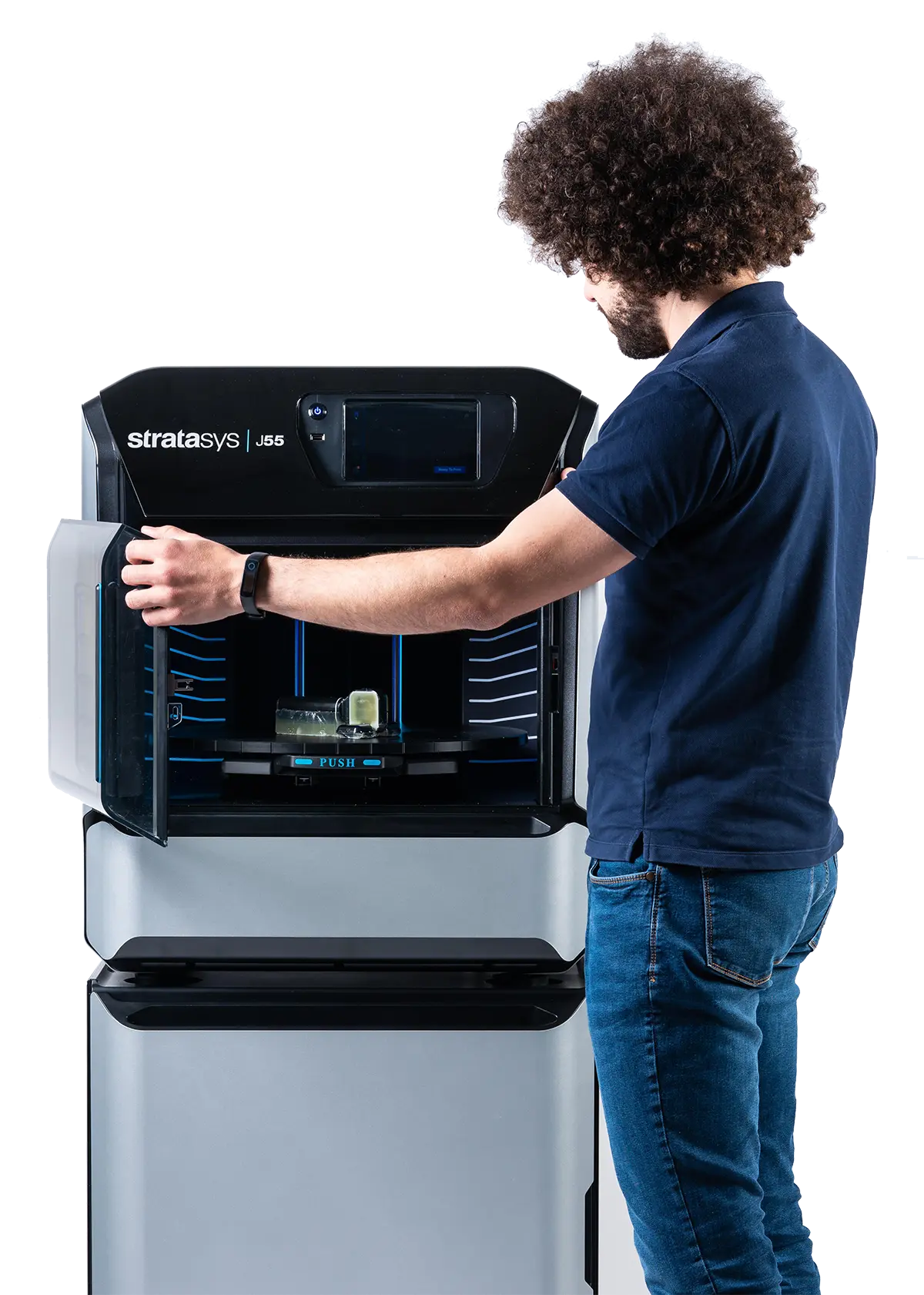PolyJet 3D printing is a high-resolution additive manufacturing technology that utilises a precisely controlled system of print heads to deposit tiny droplets of photopolymer resin onto a build platform until the entire object is complete.
First developed by Objet in 1998, Stratasys PolyJet printers can produce specialised moulds, prototypes, medical models, jigs, fixtures and other manufacturing tools, as well as incorporate the widest variety of vivid colours and materials into a single print for unparalleled efficiency and versatility in product development.
The PolyJet 3D Printing Process:
STAGE 1: The Design
- A designer, engineer, etc. will create a 3D digital model of the desired print using CAD software. The print can be a jig, fixture, prototype, or any other type of object, such as a sculpture, tool, or machine part.
STAGE 2: CAD Model Preparation
The CAD model is then prepared for print using GrabCAD software that converts the CAD model into a format that a PolyJet 3D printer can understand.
STAGE 3: Material Loading
With a wide range of photopolymer resins available, PolyJet 3D printing offers the most diverse material choice in the Stratasys portfolio. The next step is to load the material that suits the desired properties of the printed part, such as colour, hardness, flexibility and more into the PolyJet 3D printer, or combine multiple features from multiple materials, all in one print.
STAGE 4: Droplet Deposition
The print heads precisely deposit thousands of tiny droplets of photopolymer resin onto the build platform. Each droplet is controlled with micron precision, allowing for very fine details and intricate designs.
STAGE 5: UV Curing
As each droplet is deposited, it is simultaneously exposed to UV light. The UV light causes the resin to cure, solidifying the droplet and bonding it to the existing layer. This process is repeated layer by layer until the entire 3D object is formed.
STAGE 6: Support Structure Creation
Complex geometries often require support structures to prevent the object from collapsing during printing. These support structures are also made of photopolymer resin and are automatically generated by the printer’s software.
STAGE 7: Post-Processing
Once the printing is complete, the support structures are either dissolved using a solution, jetted or manually removed.






